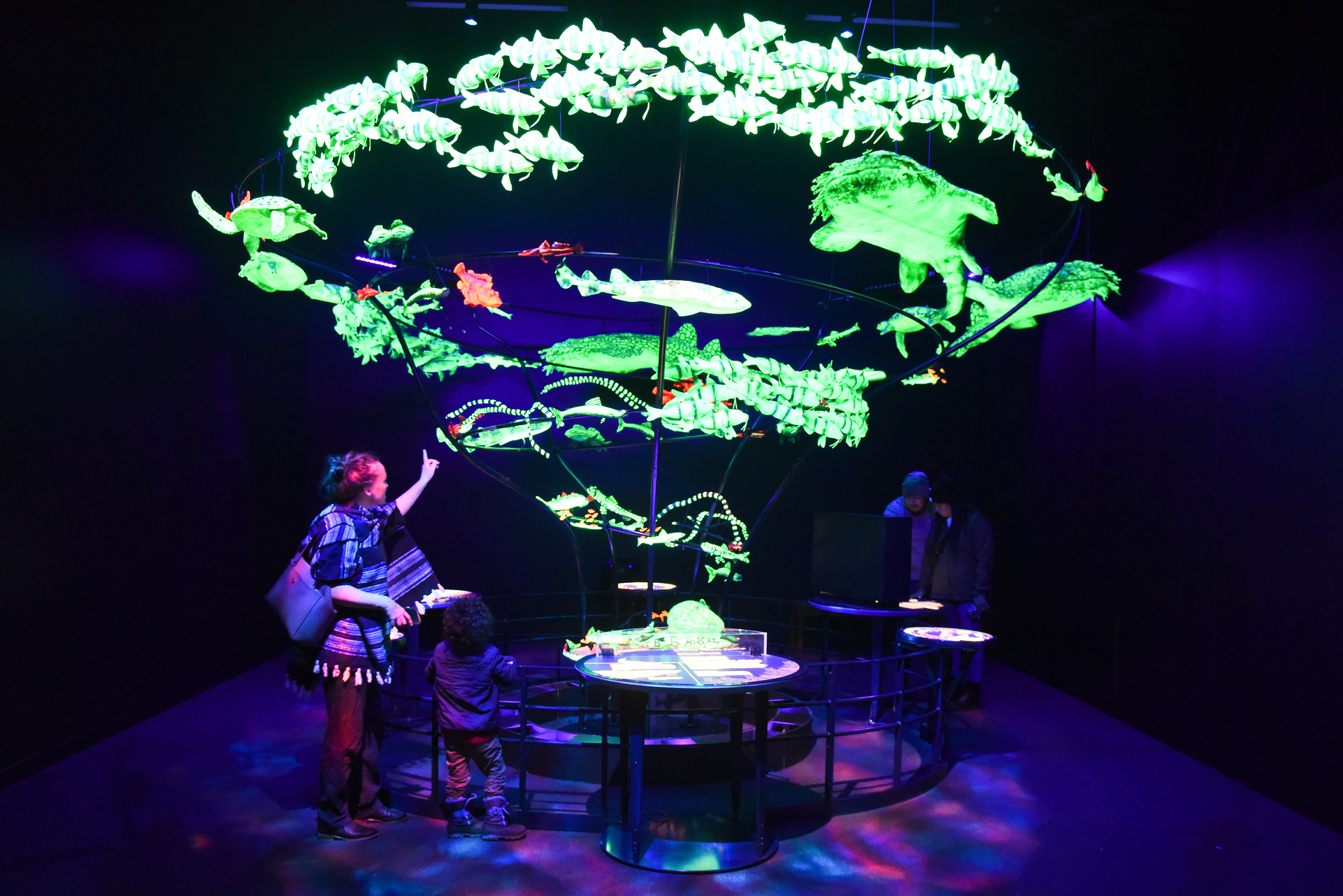Traveling exhibition showcases the stunning biodiversity from the ocean’s surface to its greatest depths
“Unseen Oceans” launches you into a journey from the oceans’ sunlit surfaces to their inky depths. You’ll discover the latest ocean science and encounter the researchers and technologies that are revealing our blue planet as never before.
“We are losing biodiversity. Much of life on Earth lies in its oceans. It is good for people to be aware of the incredible biodiversity that exists in this underexplored region,” said Museum Senior Curator of Invertebrate Zoology Paula Cushing. “New species of marine organisms are being described every year thanks to the work of some of the scientists whose work forms the basis of this amazing exhibition.”

Guests enjoy exhibit in "Unseen Oceans"
“We are losing biodiversity. Much of life on Earth lies in its oceans."

Explore a series of media-rich galleries showcasing a range of marine environments and introducing the scientists who are using cutting-edge research tools and developing new methods to explore the oceans.
How do blue whales spend their day? High-tech, removable tags on their backs provide the answer.
What’s going on in the deep waters surrounding Hawai`i? Hint: Advanced sonar reveals a new island is set to emerge—in more than 100,000 years.
How can we identify the best locations for marine protected areas? Fleets of small autonomous robots may offer important clues.
In “Unseen Oceans,” you’ll discover answers to these exciting questions and others that highlight what ocean researchers have only recently uncovered.
“Unseen Oceans” is open through April 9, 2023 and is organized by the American Museum of Natural History, New York (amnh.org), and is curated by John Sparks, curator in the American Museum of Natural History’s Department of Ichthyology in the Division of Vertebrate Zoology.

Did You Know?
- Earth’s oceans have been home to giant animals for hundreds of millions of years. Most ocean life is hidden from our view because light waves can’t penetrate very far beneath the surface.
- Only about 10 to 15% of the ocean has been accurately mapped. In fact, we know the surface of Mars at least 100 times better than the hidden surface of two-thirds of our own planet.
- Plankton are a diverse group of organisms that mostly drift with the currents—including bacteria, algae, protozoans and animals. Plankton produce well over 50% of the oxygen we breathe. Plankton blooms can
be so vast they’re visible from space. - Larvae of some coral reef fishes can detect the smells and sounds of their home reefs and even swim short distances to reach it.
- Fluorescence comes from special molecules in fish’s skin. Instead of simply reflecting light the way most pigments do, fluorescent molecules absorb light, then re-emit it.






